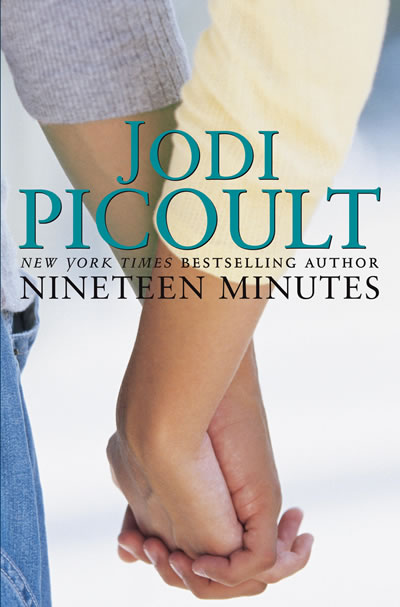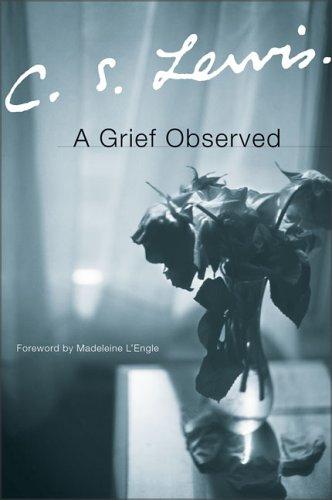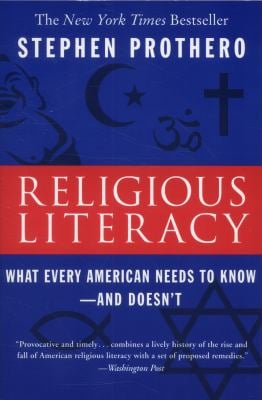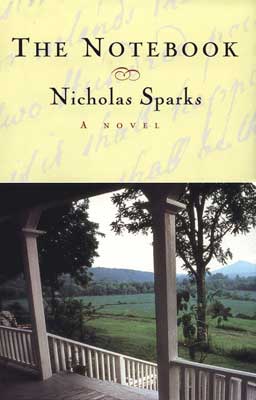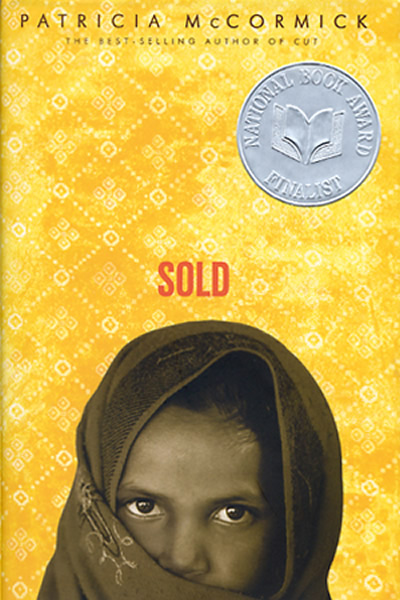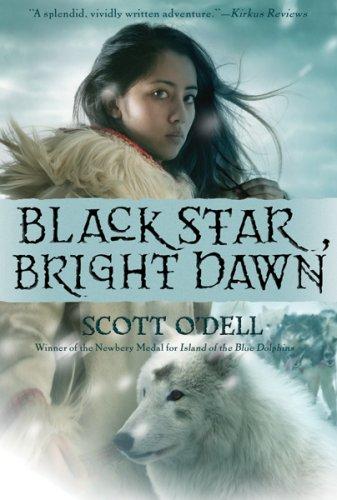I really don’t mean to offend any of the RAs when they share a book as a favorite, but I will say, this book was not only disturbing (topic area) but why would anyone want to continue and create another true-life tragedy like Columbine? While I have read a few of this author’s works, I was pretty turned off by this one. In Jodi Picoult’s Nineteen Minutes we relive the high school shooting drama that captives our communities every time one happens. I am sick of our society continuing to be so fascinated by tragedy and horror. Picoult chooses to change the scenery on this one and travel to New Hampshire, a rural part of the country (I guess to illustrate that bullying can happen anywhere, anytime?) where Peter Houghton has endured years of bullying and has reached his limit when he kills 10 classmates and wounds 12 others during a barrage on the Sterling High School grounds. Picoult, always wanting to tie so many characters and issues together, also weaves in teenage pregnancy, a latchkey life, parental misgivings, single mom making good, and of course the big “wow” conclusion. I thought the characters, especially the main character, Josie Cormier’s mother Alex, were unrealistic. OK how things get twisted together… Josie and Peter are great friends growing up as Josie and Peter’s moms met when Alex was pregnant by her college Law professor (who doesn’t marry her), and then later the two intersect at the trial after years of disagreement on how to raise your kids, but I digress, Alex is now a judge and thinks she should serve as the judge on the trail of Peter. What?!? Even small town legal processes need to be in line with main stream law, huh? I think this section of the book was needed as it added another 60 or so pages. Peter, in jail, is represented by Jordan McAfee, whose wife is the one who actually gives him his idea for how to defend Peter (oh dear, really???). Let’s not forget that Peter and Josie are tied together again based on the shooting where her boyfriend, Matt, is shot by Peter, but Josie isn’t hmm… (oh yeah, history also repeats itself … when Josie gets pregnant by her boyfriend too) Picoult’s “soap opera” script may in fact show up on a Lifetime channel re-run someday I’m sure, heck sometimes those aren’t bad, but for me this one was a stretch to throw in an many “current day issues” and put them in a blender to see what we can make happen… and then guess who falls in love with the detective of the case? Nope, you didn’t guess it? Alex, Josie’s mom, who then gets pregnant. What happened to birth control, Jodi? That’s a present day topic too. OK, enough ragging. The ending is so unpredictable, well sort of. Peter is not let off the case by quick thinking Jordan McAfee (his wife’s work was helpful but to only a point, Peter is seen on camera eating Rice Krispies after shooting four people in the cafeteria!). I would seriously skip this one. I just got another Picoult’s book as a favorite, so I hope she has used all of her “social issues” in this one cause I can’t take another one! The saving grace of this book... I played it on double speed while listening! Skip it.
Friday, September 30, 2011
Wednesday, September 28, 2011
A Grief Observed
How can one continue to go on with life when the love of their life perishes? The famous author and educator, C.S. Lewis shares his personal trauma over the loss of his wife in his book, A Grief Observed. In many ways the book allows Lewis to go through many of the stages when one loses a loved one. The book chronicles the questions and feelings challenging how he can go on without the love and discussing the pain his wife experienced through her battle with cancer. Grief is like fear, grief blocks out all other senses and feelings, and where is the “eternal one” during this process? For Lewis, God is vanished when you knock on the door for help during this tragedy. Religion does not serve as a consolation for the grief that he is now experiencing. He also questions the thought of “life after death" for his wife, named H. in the book, as Lewis wrote the book under a pseudonym, and it wasn’t until after his death that it came to light that he was the author. Grief is a process, as so many others who have experienced and documented it have claimed. Towards the end of this stream of consciousness prose, Lewis does become more reliant and accepting of God into his life as the pain of the “disappearance over time” of his wife allows him to become more reliant on God. The work is beautifully written, a book clearly from the heart. It has passion, a purely human spirit that is expressed in a way that is moving and heart wrenching. Lewis’ work stands out for his ability to take the hardest element of life, death, and demonstrates the confusion, pain, and complexity that arise from the loss. This is a quick read, in terms of volume of pages, but it is a difficult read in that the reader is confronted with one’s own feeling on the issue. To think that Lewis can write The Chronicles of Narnia, The Screwtape Letters, and this, all I can say is wow. What versatility as a writer!
Sunday, September 25, 2011
Religious Literacy: What Every American Needs to Know – And Doesn't
A great book that every person should read so we get a better perspective on our society, and more importantly the world - Religious Literacy: What Every American Needs to Know – And Doesn't by Stephen Prothero. The author provides the history of how America became so unwilling to engage in religion with the first amendment, division of church and state, and yet we are one of the most membered religious countries in the world. If you haven’t seen his religion “test”, here it is: http://www.deseretnews.com/article/660205799/Stephen-Protheros-religious-literacy-quiz.html
His hypothesis is that we need to know the history and underlying concepts of each of the world’s seven great religions.. do you know them? Here goes: Christianity, Islam, Hinduism, Buddhism, Taoism, Confucianism, and Judaism. The author goes into depth about the history of America, steeped in rich religious history brought from Europe, but the US decided to separate it from the governing rules of the country. Through his test he has shown how little our children know about religion, almost to the point of being embarrassed to know something. He suggests that it is a civic obligation that we know this history and context so that we can better understand each other and the why. We would understand the Middle East conflict and so much more. We moved away from the religious literate to the illiterate throughout the time after World War II and it heightened throughout the late 1960s. Think about how many parents don’t influence their children today because they want them to make their own choice, but in many ways isn’t that a choice? Hmmm… Prothero concludes this book with a religious dictionary that explains the main concepts and players in religious history. It is a great conversational piece and helps give context and reason for the why of the religions. It is so embedded in decision making and culture that we are really at a loss as a citizenry without the knowledge. This is a really quick read, I was able to complete it in three or so hours but was glued throughout. I will be using portions of it in my class on community evolution for grad students starting next year for sure. What a great conversation to be had. I recommend all high school juniors/seniors to read and then for all those 20 somethings to pick it up as well. What is wrong with being armed with knowledge that helps give context to this ever changing American landscape? Nothing at all. A must read for those who ever pick up the NY Times or even the NY Post (ugh!).
Saturday, September 24, 2011
Fooled by Randomness
I always love when I meet with a Stern student as I know I will get a lesson in marketing, investing, or some other business type learning. This was no different. In fact, I learned about probability and economics by reading Fooled by Randomness by Nassim Nicholas Taleb. Did I mention this is a best-selling book by an NYU faculty member… ah gotta love NYU! Taleb illustrates throughout the book how randomness is found in so much of our lives, yet we as humans are constantly looking at the stats to make our economic decisions (investments, how we respond to illness and looking for medicinal results, etc.). We as humans believe on causation in everything. I love his examples of how we look at medians and averages. Taleb mixes the story of fictional characters, Nero and his neighbor, John the High Yield Trader. Trading with calculated risk may actually pay off more than the get rich fast method. His own experience as a trader and seeing the inside world of it gives insights to how crazy the investing went during the time of the huge stock market crashes. Some of the concepts he presents includes: if you’re so rich, why aren’t you smart (is there really a correlation??), randomness and science, math throughout history, and the millionaires next door. I loved the concept of how one can look at the glass… think about the guy who graduated from Harvard and Yale Law School and lives in upper east side NYC. While he makes $500,000 a year, the choice of where he lives makes him the lowest paid person in his building, yet he is in the 99.5% of income in the world. Or how many years one will live depends on how old you are at the time. If you are 60 years old, more chance to live to 73 years of age, because you have already outlived those who died and bring the age range down. And yes, real life phenomena are really a 50-50 proposition, aren’t they? Yes I do believe so. So I guess that leaves me thinking… will I be a millionaire someday? Let me flip a coin. I’ll say heads… here goes… oh dear, tails. Guess not. Worth reading for sure! Common sense made simple. Pick it up and learn something.
Friday, September 23, 2011
Little Pea
Always fun to read a children’s book as a RA Favorite book. This one was a fast read picture book depicting the challenges of being a child… pea (like in the vegetable). There was Momma Pea and Daddy Pea and Baby Pea. The book is called Little Pea by Amy Krouse Rosenthal. Little Pea didn’t like eating her “candy” for dinner (a metaphor for vegetables for humans, I think)…. And she dreaded those five pieces every night. But if she eats it guess what was for dessert? You got it, spinach! WOW…. Nice illustrations in this one. A good book for a little kid for sure. Love the diversity of “favorites” with the NYU students, huh? Not my favorite children’s book for sure. Still love Lilly’s Purple Purse and Things I Like…
Thursday, September 22, 2011
The Master and Margarita
A complicated read in which you really need to pay attention, especially when listening over a course of a few weeks… The Master and Margarita by Mikhail Bulgakov. What happens when the devil visits Russia? There are two stories interwoven, 1930s Moscow and the time of Pontius Pilate. Young writer (aka, homeless) meeting with literary chief Berlioz, who suddenly dies when confronted by the powers of Woland, have Ivan (homeless) chased into an asylum. He later meets “the Master,” an author who wrote a novel about Pontius Pilate and Jesus Christ. It just happens his lover is Margarita (hence the name of the book, eh?). Secret powers, thwarted love, the devil returning, and Christ’s fate at the hands of Pilate are all linked in the story. Using the special powers of flight Margarita collides into Satan’s circle and fighting him off she is granted a wish, which gets freedom for a woman who endured rape and gaining a second wish she liberates the Master, but later dies after drinking a potion from the Devil. They are eventually given peace in their limbo state – no heaven or no hell, and never any light. And the Master helps Pilate from being released from eternal damnation and freeing him. Bulgakov is aptly able to connect the story of Pilate’s fate after Jesus' death and the Devil’s handle over much of the evils on earth through the poet’s exploration of history. The book brings history and future into the context of Russia’s decadent region. The writing is brilliant and the story is well crafted. For those who like divergent stories tied together in the end, you’ll enjoy this one. Not a huge fan of all the Russian character names, but hey, that’s the context of the setting. Strong read.
Wednesday, September 21, 2011
Tales of the City
I felt like I was in a time warp, reading about a lot of the things happening in the early 1970s. For anyone from that era, remember “Mary Hartman, Mary Hartman” a comedy/satiric take off of soap operas? Well, this one was written at the same time, and in many ways was the newspaper version. Armistead Maupin’s Tales of the City combines short episodic stories with the happenings of city life. The book is set in the bay area, San Francisco, and centers on the boarding house of Mrs. Madrigal. Mary Ann Singleton, a native of Cleveland, leaves her parents' home for a week and decides not to return. Staying with her sex-crazed friend, she realizes this isn’t going to work out and finds a boarding house on Barbury Avenue that is run by marijuana growing farmer Mrs. Madrigal. The rest is history! Gay life, sex at all turns, finding a job, infidelities, having babies, mysteries, and all kinds of escapades are found in this “laid back” book. The writing is a series of 3-4 page chapters. The stories actually appeared in the San Francisco Chronicle each evening and was later placed in book format. There are more books in the series, but the first book sets the stage for the folks who live in the house. I love how the book ends, lots of cliff hangers (the author was smart, having you want for more!)… a daughter of the executive announces she is pregnant, one of the character’s parents visit (unannounced) whom she hasn’t seen in years (not a big deal right? Well she changed her skin color!), and finally Mrs. Madrigal is under investigation, but the PI is dead (he lived in the house!!!). Who done it? Why? What is up with Mrs. Madrigal? What will happen to Mona and D’orthea (whose parents are sitting down stairs to see her)? So many questions… stay tuned. A fun and light read. I can see why people would buy the SF Chronicle every day just to read this. Low impact, funny, and pretty easy reading!
Friday, September 16, 2011
Delivering Happiness: A Path to Profits, Passion, and Purpose
As a person who really enjoys organizational effectiveness/morale books, I was pretty disappointed in this one. Delivering Happiness: A Path to Profits, Passion, and Purpose by Tony Hsieh was a disjointed set of “how to's” and “hey, I’m rich, here’s my story” and “I’m arrogant too.” Whenever an author would actually say in the forward, “as you read this book you’ll probably notice some sentences (how about complete thoughts and structure of the book too?) that aren’t the best English grammar…. I did this partly because I wanted the writing to reflect how I would normally talk”… then do a YouTube Video! OK, I may get slammed for this as my blog is not “grammar proof” for sure, but hey, I’m not selling this for $23.99!! What!? The jacket cover states this book will help “employees grow,” apply research from the “science of happiness” (what science is that???), and (listen to this one!) "seek to change the world!!!!" Sorry, I’ll let it go. Tony states he isn’t going to do a comprehensive history of Zappos (why not, you did one of the your early life and LinkExchange?), which unfortunately he didn’t. This led me to think, ok you don’t give the history and now you present all of these lessons learned. I’m sorry to be so critical on Tony, probably a great guy, but because you're rich you think you can provide a corporate value set that should be followed by others? I was distracted throughout as I never knew where this book was actually going. This held most true when he started adding these sections (actual letters of heartwarming moments from staff and customers of Zappos) without really providing the lead in to them. It reminds me of the MTV generation. Lack of fluidity and engagement with your reader. Maybe because I had never heard of Zappos (what tree is my head under, oh it must be in all of these books I have been reading for the past few years), I felt even less connected to the “Zappos brand story”… I never had that amazing customer service engagement they are noted to have towards their clients. Amazing concept created by Zappos, create that “WOW” customer service moment. So overused. I think I heard that first at Snowman’s Ice Cream when I was 4. I certainly hope this book isn’t selling millions, if so, sign me up to do one, wait I need to create a trite and trendy “service related” adjective… “creating triumph for every customer!” Listen, Tony you are a rich guy, go get someone to help organize and craft your message a bit more coherently, you have the billions to do so. Good to Great has you beat with every clear message. If you are to read a great management/org change book, read Collins' masterpiece, this one should be on the $1 rack on Strand soon. I’d take a pass.
Thursday, September 15, 2011
The Notebook
Can you say tear-jerker? The Notebook by Nicholas Sparks is a contemporary story that faces too many people today – living for the past because the present isn’t in focus anymore. The story goes from a infatuation, love, missed love, and to the present. Noah and Allie meet during a summer high school love affair, but from two different sides of the “tracks” the story is captured in a book, we find out later on by Noah, 50+ years later reminiscing about his attraction and subsequent love for Allie who now suffers from Alzheimer’s disease. Circa their early love affair, it is broken up by her mother who will not allow the two young love birds to be together because of the socio-econmic divide. Allie’s mom seems to have been successful, as Noah later goes to the war (WWII) and his return brings him to restore old homes. Allie reads a story about him 14 years after their separation; even though she is engaged to be married (does one ever forget their first love?). Their attraction still remains! When Allie’s mom finds out about it she tries one more time to separate the two, but in the end she in fact draws them closer (how about those love letters that Noah wrote to Allie that Mom hid for oh so long… that’s the clincher, huh?). Fast forward to this love story being told to the woman who lived it and can’t remember. If you have no human emotion this book will not have any meaning. If you ooze the sad but true realities that we face as we get old, or even when we are young and reflect on the one that got away, you should be moved. Sparks is criticized for writing “sappy books” but if you are in the mood to get a good emotional high/low, this one is for you. Can you say “Chick Flick?” Tell your significant other to read this and they will see how much you love them. I didn’t feel it was over the top, but you need to be in the mood. Please don’t confuse this with Gone with the Wind or East of Eden. A contemporary read for sure.
Sunday, September 4, 2011
Blue Like Jazz
Almost an “On Golden Pond” two days which forecasters said would be rainy. I wish I had a job which I could be right 30-40% of the time. Interesting read challenging one’s religious thinking. In Blue Like Jazz by Donald Miller, we follow Miller’s personal journey exploring his relationship to God. Once a non-believer, Miller explores his own openness to believing that God exists and what happens is an on-going struggle with his relationship with Jesus. I really like the motif that Miller uses to introduce the journey for him with religion… “I never liked jazz music because jazz music doesn’t resolve.” It wasn’t until after he witnessed a saxophonist playing with eyes closed deep into his music that he began to understand it and now liked it. “Sometimes you have to watch somebody love something before you can love it yourself. It is as if they are showing you the way.” Ahhhh... for Miller it is others deep commitment to his savior that gives him the understanding needed for his journey. Miller begins the story in his youth describing his parents failed marriage based on his father’s addiction, alcohol. The lessons that Miller shares from his youth (and listened to) are the type of mundane interactions that happen for youth everyday… but for Miller something happens. He listens intently and reflects. How often we as individuals live this life without thinking about the deeper meaning, how do I live a meaningful life? Miller’s travels takes him to college, Reed College (I have heard about it previously as a “hippie,” “ new wave,” and “experimental place for students”) and Miller re-affirms and provides an interesting perspective of love and freedom exploring the curriculum. A huge shout-out to NYU when he is introduced to a “hippie cult” of people from NYU! It is an interesting read from a man who shares the down moments and how to deepen one’s commitment to their God. A good read for non-believers and Christopher Hutchins followers. Moments in the book resonated with me, others were somewhat redundant. I can see how someone on the same path as Miller would really enjoy this book. It’s probably an acquired taste book.
Saturday, September 3, 2011
Sold
Labor Day weekend going well for the most part. Lost my keys and spent hours driving in car to Allentown, PA (did get to see son Christian as he had the extra set of keys for PA House). But, making progress on the reading front. Have met close to ¼ of the new RAs and only 12 new books so far! And down to 14 to go on the overall list. Have been busy with Opening and other things that have kept me from reading as quickly as I would have hoped, nonetheless finished another one today. Sold by Patricia McCormick is the story of a twelve year old Nepali girl being sold by her step-father in an effort to have money for her mother and baby brother. Her mother, Ama is seemingly unaware that her daughter is being sold into prostitution. Rather she thinks she will be serving as a maid for women in the city. Lakshmi is transported from one “seller” to another and finally is led to the brothel where she is introduced to her new life as a prostitute. She is forced into the work after fighting it off at first by biting the tongue of her first client. When the “Madame” realizes what has happened, she drugs Lakshmi and that is how she loses her virginity. The children are driven into fear at every corner and forced to believe they can never leave the house for fear of reprisals by the goons the Madame has hired. It takes a visiting American to get Lakshmi to realize that there may be a way out. This reality story was researched by the author through her travels in the countries and provides a tragic picture of how innocent young girls face this senseless existence. McCormick’s narrative prose is presented through brief “poem like/short stories” with titles and short tales. The flow of the story moved quickly and was easy to sit down and read this one in a few hours. A story that needs to be told! A good read, especially if we can do something that will get this horrific activity to end. Probably has been a 60 Minute segment if not it should be. As a book, not a top ten for sure but serves the purpose of getting sex trafficking in the main stream media.
Friday, September 2, 2011
Black Star, Bright Dawn
A good read for younger ones - Black Star, Bright Dawn by Scott O’Dell. The story of a young Alaskan woman who comes to the rescue of her father after he becomes too ill to race in the annual dog sled run through the state of Alaska. Bright Dawn, the daughter’s name, at the age of seventeen beats the odds in the competition to win $50,000. She goes from fortieth place to neck and neck to the finish line. Will she win? The reader learns that winning the gold is not the only award that is important (I won’t give it away to you). Bright Dawn goes through the Alaskan version of the French Tour de France with her own “bicycle,” her lead dog, Black Star. The two go off-course near the end of the race, but somehow manage to pass everyone else when they realize that all of the other teams made the wrong turn in the course. Prior to the final leg of the race, Bright Dawn meets snow, blizzard, moose in the trail, and other challenges. Of course we witness Bright Star’s constant sportsmanship of helping other racers when they are derailed, dogs get sick, and weather conditions require her to build an igloo for safety with others. This is a very fast read that has a nice message in the end. If you have a nephew or niece, get this book for their library. Cute!
Subscribe to:
Posts (Atom)
